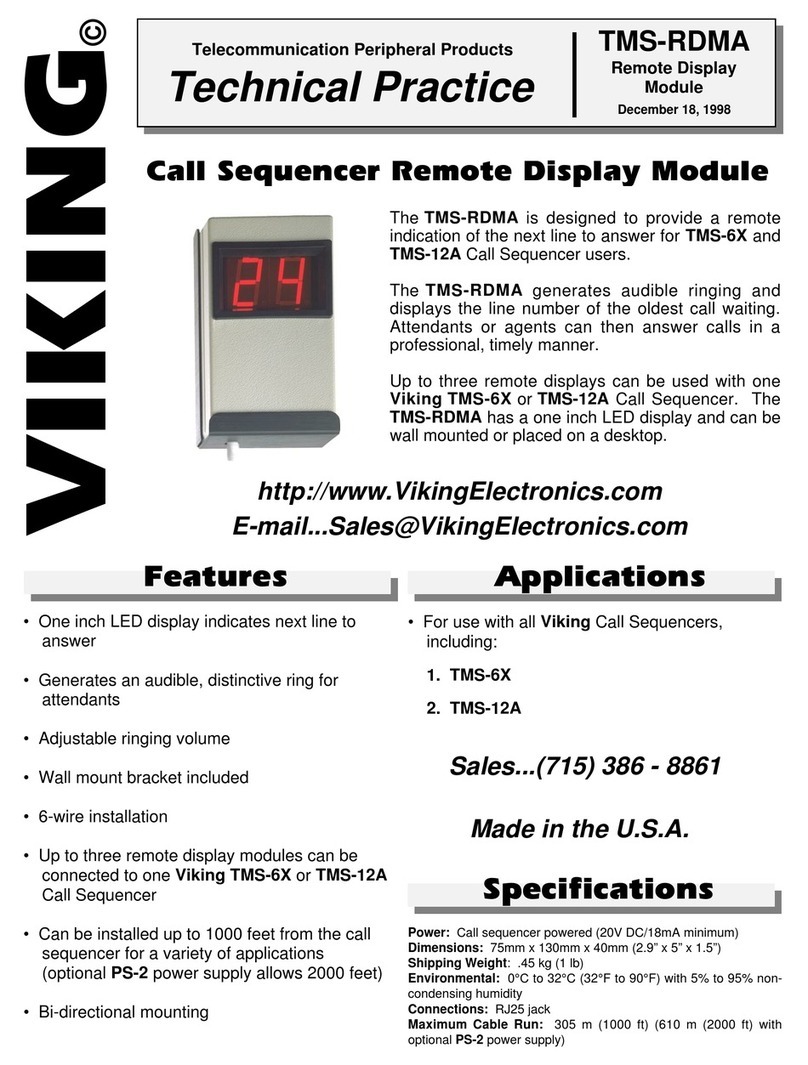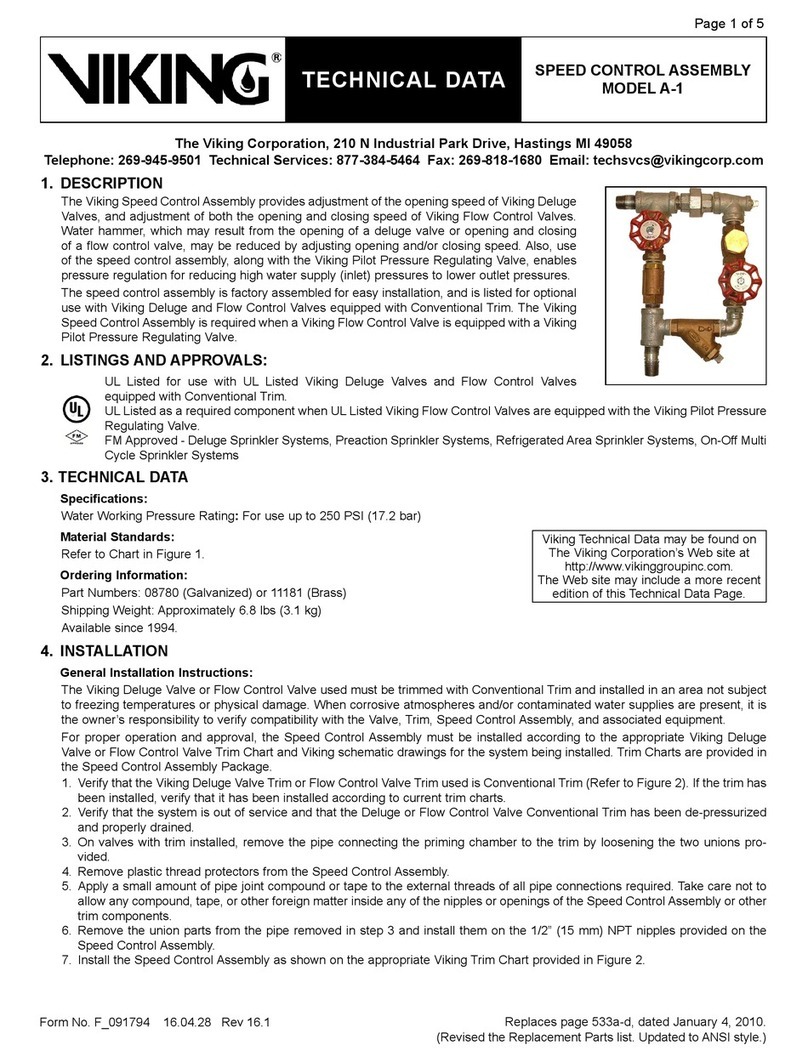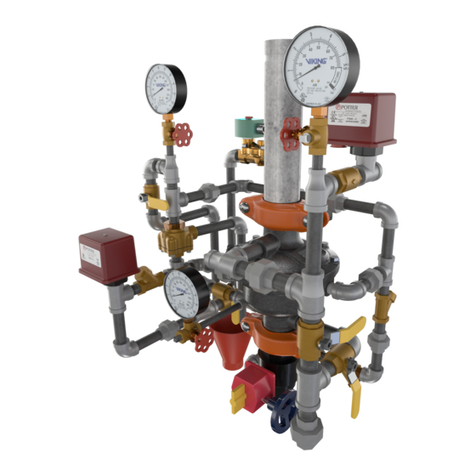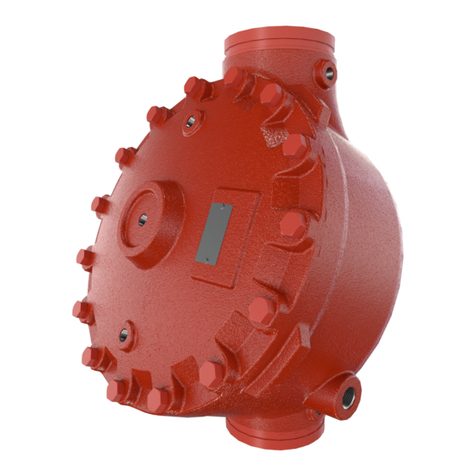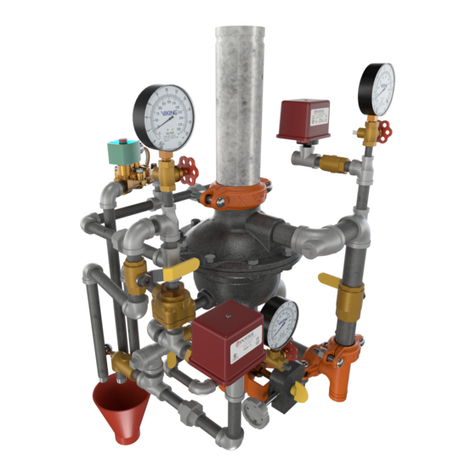
TECHNICAL DATA
MODEL VXD SINGLE-
INTERLOCKED PREACTION
SYSTEM WITH ELECTRIC
RELEASE
The Viking Corporation, 210 N Industrial Park Drive, Hastings MI 49058
T
elephone:
269-945-9501
T
echnical
Services:
877-384-5464
Fax:
269-818-1680
Email:
[email protected]Visit the Viking website for the latest edition of this technical data page www.vikinggroupinc.com
Page 8 of 13
Form No. F_051820 21.01.01 Rev 21.1
9.2 Periodic System Tests
A. Quarterly Water Flow Alarm Test
1. Notify the Authority Having Jurisdiction and those in the area affected by the test.
2. To test the local electric alarm (if provided) and/or mechanical water motor alarm (if provided), OPEN the alarm test valve
in the Deluge Valve trim.
a. Electric alarm pressure switches (if provided) should activate.
b. Electric local alarms should be audible.
c. The local water motor gong should be audible.
d. If equipped with remote station alarm signaling devices, verify that alarm signals were received.
3. When testing is complete, CLOSE the Alarm Test Valve.
4. Verify the following:
a. All local alarms stop sounding and alarm panels (if provided) reset.
b. All remote station alarms reset.
c. Supply piping to water motor alarm properly drains.
5. Verify that the Alarm Test Valve is CLOSED.
6. Verify that the outlet chamber is free of water. No water should flow from the alarm drain line.
7. Notify the Authority Having Jurisdiction and those in the affected area that testing is complete.
B. Quarterly Main Drain Test
1. Notify the Authority Having Jurisdiction and those in the area affected by the test.
2. Record pressure reading from the water supply pressure gauge.
3. Verify that the outlet chamber of the Deluge Valve is free of water. No water should flow from the alarm drain line.
4. Fully OPEN the Flow Test Valve.
5. When a full flow is developed from the Flow Test Valve, record the residual pressure from the water supply pressure
gauge.
6. When the test is complete, SLOWLY CLOSE the Flow Test Valve.
7. Compare test results with previous flow information. If deterioration of the water supply is detected, take appropriate steps
to restore adequate water supply.
8. Verify:
a. Normal water supply pressure has been restored to the inlet chamber, the priming chamber, and the release system.
The pressure on the priming chamber water pressure gauge should equal the system water supply pressure.
b. All alarm devices and valves are secured in normal operating position (refer to Figure 1).
9. Notify the Authority Having Jurisdiction that the test is complete. Record and/or provide notification of test results as
required by the Authority Having Jurisdiction.
C. Annual Trip Test
CAUTION
any open sprinklers and/or nozzles. Take necessary precautions to prevent damage.
1. Notify the Authority Having Jurisdiction and those in the area affected by the test.
2. Fully open the Flow Test Valve to flush away any accumulation of foreign material.
3. Close the Flow Test Valve.
4. Trip the system by operating a detector. Allow a full flow to pass through the Deluge Valve. Water flow alarms should
operate.
5. When test is complete:
a. Close the Main Water Supply Control Valve.
b. Close the Priming Valve.
c. Open all system main drains. Allow the system to drain completely.
6. Perform semi-annual maintenance. Refer to section 9.3.B: Semi-Annual Maintenance.
7. Place the system in service. Refer to section: "7. PLACING THE SYSTEM IN SERVICE".
8. Notify the Authority Having Jurisdiction that the test is complete. Record and/or provide notification of test results as
required by the Authority Having Jurisdiction.

